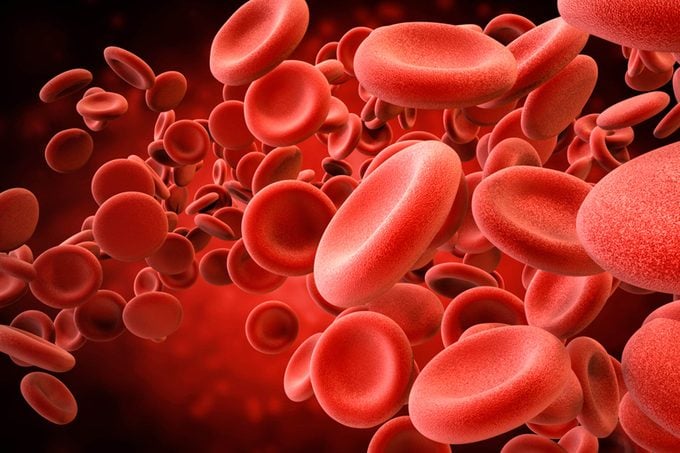Here’s Why Blood Is Red (Because You’ve Always Wondered)
Updated: Oct. 29, 2020
Despite what Valentine's Day has led us to believe, the heart is a disappointing drab brown. So why is blood red? Find out the real reason.
There’s a surprising amount of color under your skin. Pink lungs (as long as you don’t smoke—here are 23 ways to stop), a rich brown liver, and the muted grey of the brain. And coursing through your veins and arteries is red, red blood. Every wondered “Why is blood red?” We have answers.
What Are Red Cells?
Human blood isn’t just a fluid—it contains a variety of good stuff to keep your body running. Most of our blood is made up of plasma, in which all our different blood cells are suspended, and any substances carried by the blood (besides oxygen) are dissolved. “The most common type of blood cell suspended in the blood plasma are red blood cells,” says David Gatz, MD, an emergency room physician at Mercy Medical Center in Baltimore, MD and a clinical instructor at the University of Maryland Medical Center, also in Baltimore. You should be aware of the warning signs of anemia, a lack of healthy red blood cells.)

Red blood cells contain an iron-rich protein called hemoglobin, which carries oxygen from the lungs to all parts of the body, according to the National Cancer Institute. “The red color comes from a sub unit of the protein known as ‘hemes’ which bind to the iron. Oxygen then bonds to the iron, and it is the interaction between the heme units and the oxygen that makes blood red,” he says. The other parts of our blood—platelets and white blood cells—have no impact on the color of our blood. (Try these natural habits to boost your immune system to raise white blood cell levels.)
“The blood in the arteries to and from the heart and lung is bright red whether it is inside the body or outside,” he says. By contrast, blood in your veins is a deeper, darker shade of red, he says. (Although your veins may appear blue, you don’t really have blue blood; that’s just an optical illusion, explains the National Institute of General Medical Sciences.)
Oxygen Makes It Red
It’s the oxygen that gives red blood cells their frank hue, Gatz adds. “If your oxygen levels are low from trouble breathing, all of your blood may be darker.”
Many people try to stop bleeding at home, but if your cut or wound is spewing bright red blood in pulsatile motion, it means you have nicked an artery—not a vein—and should go to the ER, Gatz warns.
